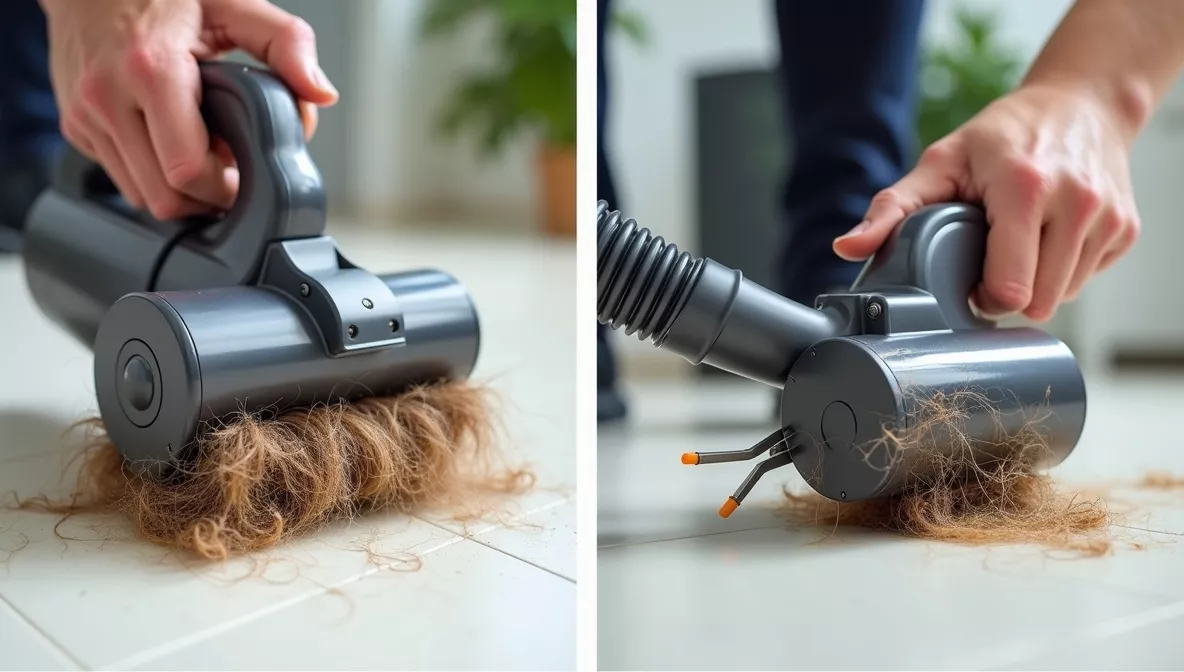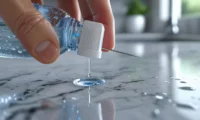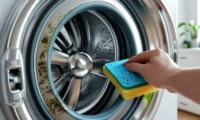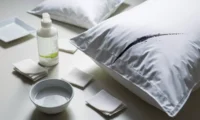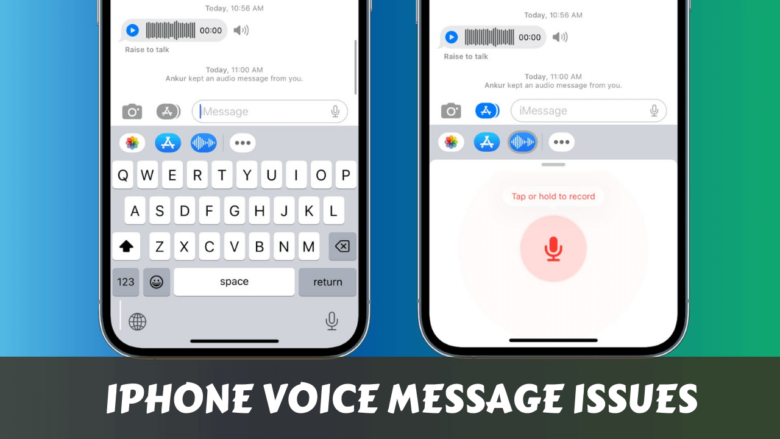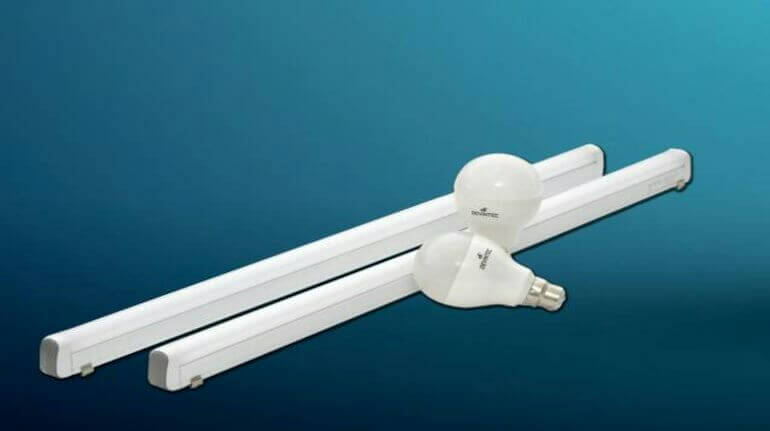You’re standing there staring at your vacuum’s brush roll that looks like a furry caterpillar.
- Why Your Vacuum Brush Roll Gets Clogged With Pet Hair
- Signs Your Brush Roll Needs Cleaning
- 💖 You Might Also Like
- Step-by-Step Guide: Remove Pet Hair from Vacuum Brush Roll
- Step 1: Turn Off and Unplug Your Vacuum
- Step 2: Remove the Brush Roll
- Step 3: Cut Away the Hair
- Step 4: Pull Out the Loose Hair
- Step 5: Clean the Brush Housing
- Step 6: Reassemble Everything
- Tools That Make Pet Hair Removal Easier
- The Game Changers
- The Nice-to-Haves
- How Often Should You Clean Your Brush Roll?
- ✨ More Stories for You
- Prevention Tips to Reduce Hair Buildup
- Before You Vacuum
- During Vacuuming
- After Vacuuming
- When to Replace Your Brush Roll
- Different Vacuum Types, Different Approaches
- Upright Vacuums
- Canister Vacuums
- Robot Vacuums
- Stick Vacuums
- 🌟 Don't Miss These Posts
- Troubleshooting Common Issues
- “My Brush Roll Won’t Come Out”
- “The Hair Won’t Cut”
- “My Vacuum Still Sounds Weird”
- FAQs
- How do I know if my vacuum brush roll is removable?
- Can I wash my vacuum brush roll?
- Why does pet hair wrap around the brush roll so easily?
- What’s the best tool for cutting pet hair from brush rolls?
- How can I prevent my brush roll from getting clogged so quickly?
- Is it normal for my vacuum to smell when the brush roll is clogged?
- Can I use my vacuum without the brush roll?
- The Bottom Line
Your Golden Retriever just shed enough hair to knit a sweater.
And your vacuum is making that horrible whining sound again.
Been there. Done that. Got the pet hair-covered t-shirt.
Why Your Vacuum Brush Roll Gets Clogged With Pet Hair
Here’s the deal.
Pet hair is basically nature’s way of testing your patience.
It wraps around your brush roll like it’s getting paid to do it.
The more you vacuum, the worse it gets.
And eventually, your vacuum gives up and starts spitting hair back at you.
Signs Your Brush Roll Needs Cleaning
You’ll know it’s time when:
- Vacuum sounds like it’s dying – That whining noise isn’t normal
- Hair everywhere except in the bin – It’s just redistributing the mess
- Suction feels weak – Like trying to drink a milkshake through a coffee stirrer
- Visible hair wrapped around the brush – Looks like a hair scrunchie from the 80s
- Burning smell – Motor working overtime to spin a hair-clogged brush
💖 You Might Also Like
Step-by-Step Guide: Remove Pet Hair from Vacuum Brush Roll
Step 1: Turn Off and Unplug Your Vacuum
Safety first.
I learned this the hard way when my vacuum decided to eat my shoelace.
Always unplug before you start pulling things apart.
Step 2: Remove the Brush Roll
Most vacuums have either:
- Twist locks – Turn counterclockwise
- Push buttons – Press and slide out
- End caps – Pop them off and slide the brush out
Check your manual if you’re stuck.
Or just look for obvious release mechanisms.
Step 3: Cut Away the Hair
Here’s where it gets fun.
Grab a pair of scissors or a seam ripper.
Pro tip: Use a seam ripper – it’s like having a tiny sword designed for this exact battle.
Cut along the brush bristles.
Don’t try to unwind the hair.
That’s like trying to untangle Christmas lights while blindfolded.
Just cut it and move on.
Step 4: Pull Out the Loose Hair
Once you’ve made your cuts, the hair should come off easily.
Use your fingers or needle-nose pliers to grab stubborn pieces.
Warning: This is weirdly satisfying and slightly gross at the same time.
Step 5: Clean the Brush Housing
While you’re at it, clean where the brush sits.
Hair loves to hide in there too.
Use a damp cloth or vacuum attachment.
Don’t let water get into the motor housing.
Step 6: Reassemble Everything
Put it back together in reverse order.
Make sure the brush spins freely before you plug it back in.
Test it on a small area first.
Tools That Make Pet Hair Removal Easier
The Game Changers
- Seam ripper – Best $3 you’ll ever spend
- Needle-nose pliers – For grabbing stubborn hair
- Scissors with curved blades – Follows the brush shape better
- Lint roller – For cleaning the housing area
The Nice-to-Haves
- Compressed air – Blows out hidden hair
- Old toothbrush – Gets into tight spaces
- Rubber gloves – Hair sticks to rubber like magic
How Often Should You Clean Your Brush Roll?
Depends on your pet situation.
If you have one short-haired dog: Monthly
If you have multiple pets: Every 2 weeks
If you have a Golden Retriever or similar shedding machine: Weekly
If you have multiple long-haired pets: After every few uses
Trust me, staying on top of it beats dealing with a completely clogged brush.
✨ More Stories for You
Prevention Tips to Reduce Hair Buildup
Before You Vacuum
- Brush your pets regularly – Less loose hair means less vacuum drama
- Use a lint roller on furniture first – Gets the surface stuff
- Vacuum high-traffic pet areas more often – Don’t let it build up
During Vacuuming
- Go slow in pet areas – Give the vacuum time to actually pick up the hair
- Use the right height setting – Too low and you’re just pushing hair around
- Empty the bin frequently – Full bins reduce suction
After Vacuuming
- Quick brush roll check – Takes 30 seconds and saves hours later
- Store vacuum properly – Keep it away from pet areas when not in use
When to Replace Your Brush Roll
Sometimes cleaning isn’t enough.
Replace your brush roll if:
- Bristles are worn down – They should stand up straight
- The core is cracked – Usually from forcing it to spin with too much hair
- Bearings are shot – Wobbles when spinning
- It’s been cleaned 20+ times – Everything has a lifespan
Different Vacuum Types, Different Approaches
Upright Vacuums
Usually the easiest to clean.
Brush roll pops right out.
Most have tool-free removal.
Canister Vacuums
Check if your brush head is removable.
Some are, some aren’t.
If it’s not removable, work with what you’ve got.
Robot Vacuums
These little guys get clogged fast with pet hair.
Clean them after every few runs.
The brush rolls are usually tiny and easy to handle.
Stick Vacuums
Similar to uprights but smaller.
Some have removable brush rolls, others don’t.
Check your model.
🌟 Don't Miss These Posts
Troubleshooting Common Issues
“My Brush Roll Won’t Come Out”
- Make sure the vacuum is off
- Look for hidden locks or clips
- Check if there’s a specific sequence to follow
- Don’t force it – you’ll break something expensive
“The Hair Won’t Cut”
- Your scissors might be dull
- Try pulling the hair taut while cutting
- Use a seam ripper instead
- Some synthetic pet bedding hair is tough – be patient
“My Vacuum Still Sounds Weird”
- Double-check the brush is seated properly
- Make sure nothing is still wrapped around the axles
- Check for hair in the housing
- The motor might need professional attention
FAQs
How do I know if my vacuum brush roll is removable?
Most modern vacuums have removable brush rolls. Look for twist locks, push buttons, or end caps near the brush. Check your manual or manufacturer’s website for specific instructions.
Can I wash my vacuum brush roll?
Most brush rolls can be rinsed with water, but avoid soaking the bearings. Let it dry completely before reinstalling. Check your manual first – some manufacturers void warranties if you get the brush wet.
Why does pet hair wrap around the brush roll so easily?
Pet hair has tiny scales that catch on bristles and each other. Combined with the spinning motion of the brush, it creates a wrapping effect. Regular cleaning prevents this buildup.
What’s the best tool for cutting pet hair from brush rolls?
A seam ripper is the most effective tool. It’s sharp, precise, and designed to cut threads without damaging fabric – perfect for brush bristles.
How can I prevent my brush roll from getting clogged so quickly?
Regular pet grooming, frequent vacuuming of pet areas, and monthly brush roll maintenance significantly reduce hair buildup. Also, empty your vacuum bin frequently to maintain proper suction.
Is it normal for my vacuum to smell when the brush roll is clogged?
A burning smell usually indicates the motor is working harder to spin the clogged brush. This can damage your vacuum over time, so clean the brush roll immediately.
Can I use my vacuum without the brush roll?
Some vacuums work without the brush roll, but you’ll lose agitation power for carpets. It’s fine for hard floors temporarily, but replace or clean the brush roll as soon as possible.
The Bottom Line
Learning how to remove pet hair from vacuum cleaner brush roll effectively isn’t rocket science.
It’s just one of those adulting skills nobody teaches you.
Like changing a tire or folding a fitted sheet.
But once you’ve got it down, you’ll wonder why you waited so long.
Your vacuum will thank you.
Your carpets will thank you.
And you’ll actually start winning the war against pet hair instead of just participating in it.
Now stop reading and go clean that brush roll.
Your Golden Retriever isn’t going to stop shedding just because you learned something new.


